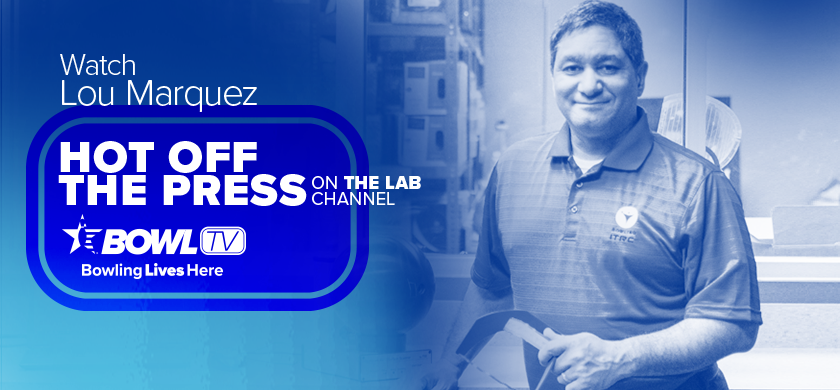By Lou Marquez on Jun 11, 2019 10:51:22 PM
In our last episode, we used our surface scanner to determine if the grits denoted on sanding pads actually corresponded to the grit they generate on the bowling ball. What we learned without a doubt: applying surface to a bowling ball lowers the ball's average grit. We knew this, but it's important to note the results proved it once again.
 What was less certain is the numbering systems for each manufacturer. It's not that one is better than another, but that each manufacturer uses their own labeling system and you need to determine for yourself which one makes the most sense and works best for you. The best thing to do is experiment on the lanes with different surfaces and find the ideal solution for your game.
What was less certain is the numbering systems for each manufacturer. It's not that one is better than another, but that each manufacturer uses their own labeling system and you need to determine for yourself which one makes the most sense and works best for you. The best thing to do is experiment on the lanes with different surfaces and find the ideal solution for your game.
For those experiments, we were using brand new pads. What if we use an old pad? Do we get the same results? Does a 500-grit pad always change the surface the same or does it get weaker as it gets used?
Back to the surface scanner. This time, we're going to do two experiments again-one with a 500-grit pad and one with a 1,000-grit pad from a different manufacturer-but we're going to use pads that have already been applied to bowling balls 40 times.
500-Grit Pad
Just like last time, we started with a bowling ball with an average grit of 3,000. We apply, with consistent force, the surface pad to the entire surface of the bowling ball, rubbing in random circles. Once we've covered the entire ball, we clean it so we can get a better reading on the surface scanner.
With our 40-times-used 500-grit pad, we see it changes the surface to an average grit of 2,759. By comparison, that same 500-grit pad from the same manufacturer when it was brand new altered the surface to about 1,600. This is a big difference.
1,000-Grit Pad
When we used a brand new 1,000-grit pad, it altered the surface to 917, very close to the number labeled on the pad. Will we see the same results when using that same pad after being applied 40 times?
Short answer: no. As we see in the surface-scanner results, the used pad didn't change the grit of the ball much at all. We started with an average grit on the ball at around 3,000 and we ended at around 3,000. So, while this pad, when brand new, altered the surface dramatically and close to the number on its label, its effect was negligible after it'd been used 40 times.
What Did We Learn?
A used pad is not nearly as effective as a new pad. With the 500 (a stronger grit than 1,000), we saw the ball surface change slightly, but nothing like when we used a new 500-grit pad. With the 1,000, the surface didn't really change at all.
When relying on sanding pads to change the surface of your bowling ball, you need to keep in mind they have a shelf-life. In order to maintain consistency with your surface adjustments, you need to make sure you're using new (or fairly new) pads. The more you use them, the less effective they become, and the less you can rely on them generating the surface you want for your given playing conditions.
Lou




comments